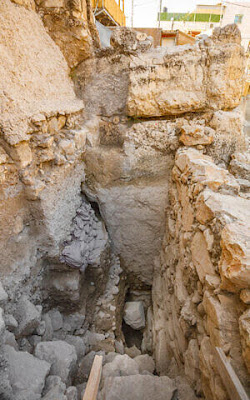According to the King James translation of Daniel 9:25, Jerusalem would be rebuilt to such an extent it would include "the street [rechob]" and "the wall [we-kharuts]." However, the Hebrew term for "wall" (charuts) can also mean "trench" or "moat" according to the Brown Driver and Briggs Hebrew lexicon (page 358 [1979]). This is why most translations of Daniel 9:25 use "moat" (KJV, ESV, NASB, NWT, NET Bible) or "trench" (NIV) instead of "wall" (KJV).
Still, some have criticized the use of "moat" in Daniel 9:25 claiming Jerusalem did not have a "moat," or that 'cutting' a moat would not be considered part of the 'rebuilding' plan. Now archaeologists have identified "a massive moat that was used to fortify and protect the Temple Mount and the king’s palace in biblical-era Jerusalem," according to the Israel Antiquities Authority and Tel Aviv University, reported in, "Solving mystery, archaeologists find vast moat that protected Jerusalem's biblical kings," The Times of Israel (07/21/2024). The article further states:
“It is not known when the moat was originally cut, but evidence suggests it was used during the centuries when Jerusalem was the capital of the Kingdom of Judah, almost 3,000 years ago, beginning with King Josiah,” said excavation directors Prof. Yuval Gadot and Dr. Yiftah Shalev. “During those years, the moat separated the southern residential part of the city from the ruling Acropolis in the north — the upper city where the palace and the temple were located.” According to the researchers, the fortification altered the natural topography of Jerusalem and required significant engineering skills and resources.
Large moat found at City of David




No comments:
Post a Comment
Note: Only a member of this blog may post a comment.